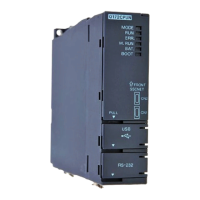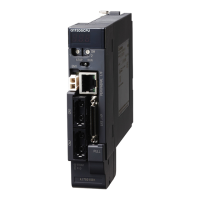6
PREPARATORY PROCEDURES AND SETTING
6.12 Maintenance and Inspection
6.12.2 Periodical inspection
6 - 95
1
OVERVIEW
2
SYSTEM
CONFIGURATION
3
SPECIFICATIONS
4
FUNCTIONS
5
ACCESS VIA NETWORK
MODULES
6
PREPARATORY
PROCEDURES AND
SETTING
7
I/O NUMBER
ASSIGNMENT
8
MEMORIES AND FILES
6.12.2 Periodical inspection
This section explains the items to be inspected once or twice every six months or every
year.
Note that these inspections are required when the system is moved or modified including
re-wiring.
* 1 10 to 90%RH when an AnS series module is used in a multiple CPU system.
Table 6.27 Periodic inspection
No. Item Inspection Criterion Action
1
Ambient environment
Ambient temperature
Measure with a thermometer
and a hygrometer.
Measure corrosive gas.
0 to 55
When the module is in the
panel, the temperature in the
panel is the ambient
temperature.
Ambient humidity
5 to 95%RH
*1
Ambience No corrosive gas
2 Power voltage
Measure a voltage across the
terminals of 100/200V AC and
24V DC.
85 to 132V AC
Change the power supply.170 to 264V AC
15.6 to 31.2V DC
3
Installation
Looseness, rattling
Move the module to check for
looseness and rattling.
The module is securely
installed.
Retighten the screws.
For the C Controller module, I/
O modules, or power supply
module, secure the module
with screws.
Dirt, foreign matter Visual check. No dirt or foreign matter. Remove and clean it.
4
Connection
Looseness of terminal screws
Further tighten with a
screwdriver.
No looseness. Retighten the terminal screws.
Distance between solderless
terminals.
Visual check.
Proper clearance between
solderless terminals.
Provide proper clearance
between solderless terminals.
Looseness of connectors. Visual check. No looseness.
Retighten the connector fixing
screws.
5 Battery
Check the "Battery error" is off
in the <<Module
information>> tab.
(Preventive maintenance)
Replace the battery if the
service life has expired
regardless of the indication.
Q06CCPU-V-B

